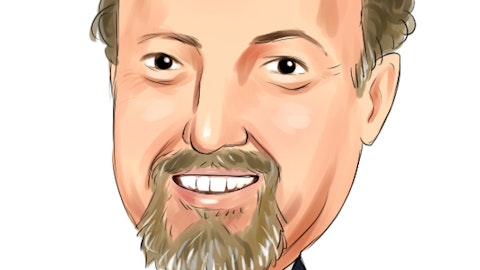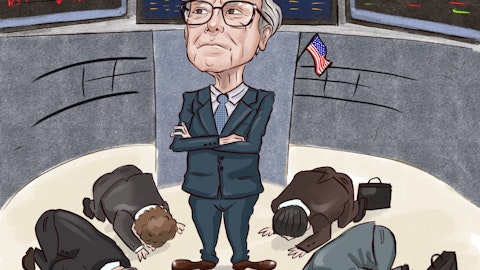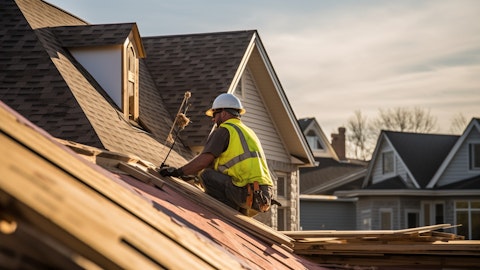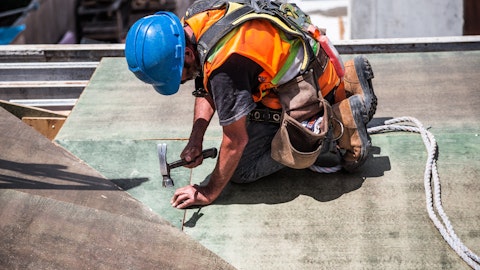Stuart Miller: I’m going to this [ph]. Okay. Good. So I’m not going to talk about this as a reincarnation of Quarterra because it isn’t. With the prior spend, we were focused number one on a tax-free spend. And number two, it was basically our multifamily, single-family for rent assets that we were splitting into a different kind of operation. This is specifically taxable spend, straight down the fairway land that is basically under production that is regular operating land, it is not excess or ancillary property or anything like that, it should be cash flowing immediately, and it is just a straightforward spin of a land program that dovetails extremely well with what we already have in place relative to other land banking programs.
This enables us to build yet another vertical that will be complementary to the others that we have, but it gives us a broader range of feeders that enable us to fortify the durability of our land-light strategy. And that’s been our focus is how do we make sure and ensure that the market conditions we have today are market conditions that we can depend on in the future? Yes, we have land developers. Yes, we have land sellers that the auction land from, but we also have the added benefit of land banking structures, and we’re creating another unique land banking structure with a permanent capital vehicle attribute that enables us to create that durability, that confidence that as we go forward, just like with lumber, just like with appliances, land becomes more of a commodity that we take down just in time.
Stephen Kim: That’s really helpful. Appreciate the distinction there. How about these other assets, which were initially conceived to be in this entity – the previously been called Quarterra. Are there any plans for that?
Stuart Miller: Well, I think it’s widely known that relative to our first fund of multifamily where we do have some investment that is currently under discussion as to how it will – it has come to the end of its fund life, and we’re considering either a sale or some kind of extension program or something. Those assets will, over time, burn off. The new focus on multifamily is to be building in a more distinctly private equity-based program where we become much more of a production engine for more affordable product. The products that we were building historically and probably kind of fallen out of favor given interest rate changes. And yet affordable rental product is very desirable and something that we can produce much more comfortably within the Lennar homebuilding divisions. And so it will be much more of a production merchant build kind of program spending regularly just like the rest of our product.
Stephen Kim: Okay. Got you. That’s helpful. Thanks very much for that. The second question I had is, I think earlier you were discussing in your prepared remarks, the cash that you have on your balance sheet, $5 billion. And I think you acknowledged that there was some interest in seeing how you are going to deploy that. And I believe you talked about that. Your response to that was that talked about a strengthening of your relationship with your land partners, how that has evolved, how would it have been tested over the last 1.5 years? And you have come through that now to a – at a place where you have now a much more robust relationship battle tested with your partners. And so it seemed to me that you were suggesting that the excess cash as you were holding maybe no longer served the purpose that it once did.
I want to make sure that I and paraphrasing what you were saying correctly. And if so, it sort of still leaves open the question of, is there anything else that you might be waiting for that you want to be patient about to see before maybe deploying that cash?
Stuart Miller: Look, we’ve been unapologetic about the patients. As we’ve migrated to a land-light strategy, we wanted to be patient about recognizing that we are developing new sources of land relationships. We want to make sure that as the market ebbs and flows, that what we depended on did we [ph] evaporate. And then all of a sudden, we needed to have capital to be able to grow, to be able to produce. I think we’ve gained a tremendous amount of confidence in the structures that we’ve built. We’re continuing to gain that confidence. We’re looking to build more of those structures in order to have that durability baked in. So that we’re much – we’re very comfortable holding a stronger balance sheet to just make sure that as we go forward, we continue to grow forward and have the capacity to do that.
I think as we’ve gained confidence, the need for holding that cash becomes less and less important. I think that our $5 billion share repurchase authorization is an indicator that we’re leaning more into returning capital to shareholders along with our dividend. And it’s all in stepping stones. We’re not afraid to go slower rather than to go fast. But the fact of the matter is we don’t have something else out there that we’re looking at that we’re anticipating using cash for. It is simply safety stock, so to speak, to make sure that the plumbing system we put in place is durable for the future. And we’ll continue to make sure that we’re positioned for the future. And as we get that confidence, you can expect that we’ll be buying back more stock.
And that’s where the allocation of capital is going to go. It’s not going to go to something else that’s unanticipated right now.
Stephen Kim: Great. Thanks so much, guys.
Stuart Miller: Okay. Thanks, Steve.
Operator: Thank you. The next question comes from Mike Rehaut with JPMorgan. Your line is now open.



